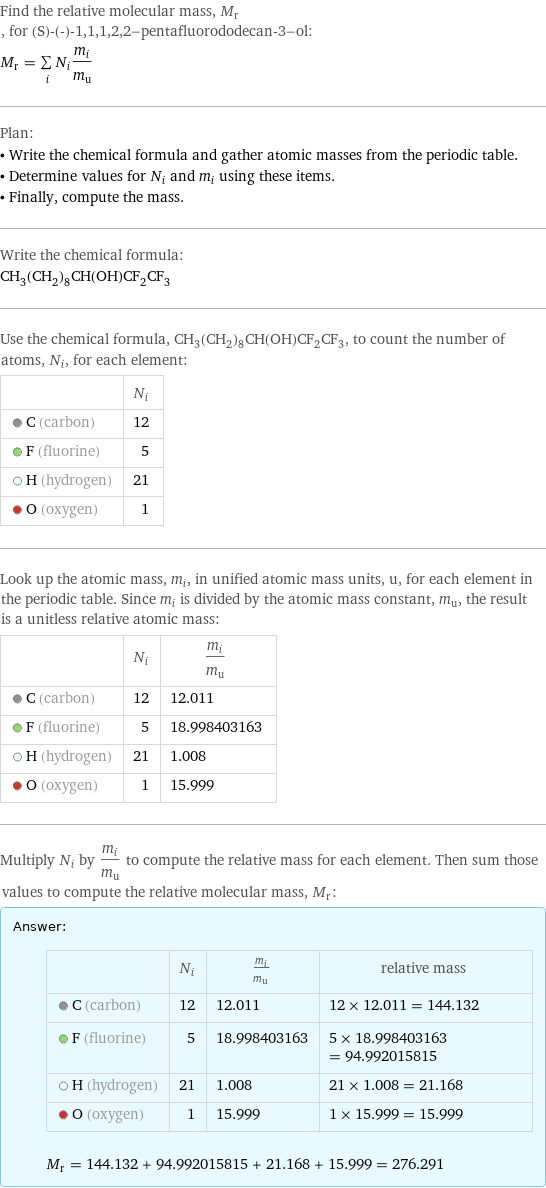Input interpretation

(S)-(-)-1, 1, 1, 2, 2-pentafluorododecan-3-ol | relative molecular mass
Result

Find the relative molecular mass, M_r, for (S)-(-)-1, 1, 1, 2, 2-pentafluorododecan-3-ol: M_r = sum _iN_im_i/m_u Plan: • Write the chemical formula and gather atomic masses from the periodic table. • Determine values for N_i and m_i using these items. • Finally, compute the mass. Write the chemical formula: CH_3(CH_2)_8CH(OH)CF_2CF_3 Use the chemical formula, CH_3(CH_2)_8CH(OH)CF_2CF_3, to count the number of atoms, N_i, for each element: | N_i C (carbon) | 12 F (fluorine) | 5 H (hydrogen) | 21 O (oxygen) | 1 Look up the atomic mass, m_i, in unified atomic mass units, u, for each element in the periodic table. Since m_i is divided by the atomic mass constant, m_u, the result is a unitless relative atomic mass: | N_i | m_i/m_u C (carbon) | 12 | 12.011 F (fluorine) | 5 | 18.998403163 H (hydrogen) | 21 | 1.008 O (oxygen) | 1 | 15.999 Multiply N_i by m_i/m_u to compute the relative mass for each element. Then sum those values to compute the relative molecular mass, M_r: Answer: | | | N_i | m_i/m_u | relative mass C (carbon) | 12 | 12.011 | 12 × 12.011 = 144.132 F (fluorine) | 5 | 18.998403163 | 5 × 18.998403163 = 94.992015815 H (hydrogen) | 21 | 1.008 | 21 × 1.008 = 21.168 O (oxygen) | 1 | 15.999 | 1 × 15.999 = 15.999 M_r = 144.132 + 94.992015815 + 21.168 + 15.999 = 276.291
Comparisons

≈ 0.38 × relative molecular mass of fullerene ( ≈ 721 )

≈ 1.4 × relative molecular mass of caffeine ( ≈ 194 )

≈ 4.7 × relative molecular mass of sodium chloride ( ≈ 58 )
Corresponding quantities

Molar mass M from M = M_uM_r: | 276 g/mol (grams per mole)

Molecular mass m from m = M_rM_u/N_A: | 4.6×10^-22 grams | 4.6×10^-25 kg (kilograms)